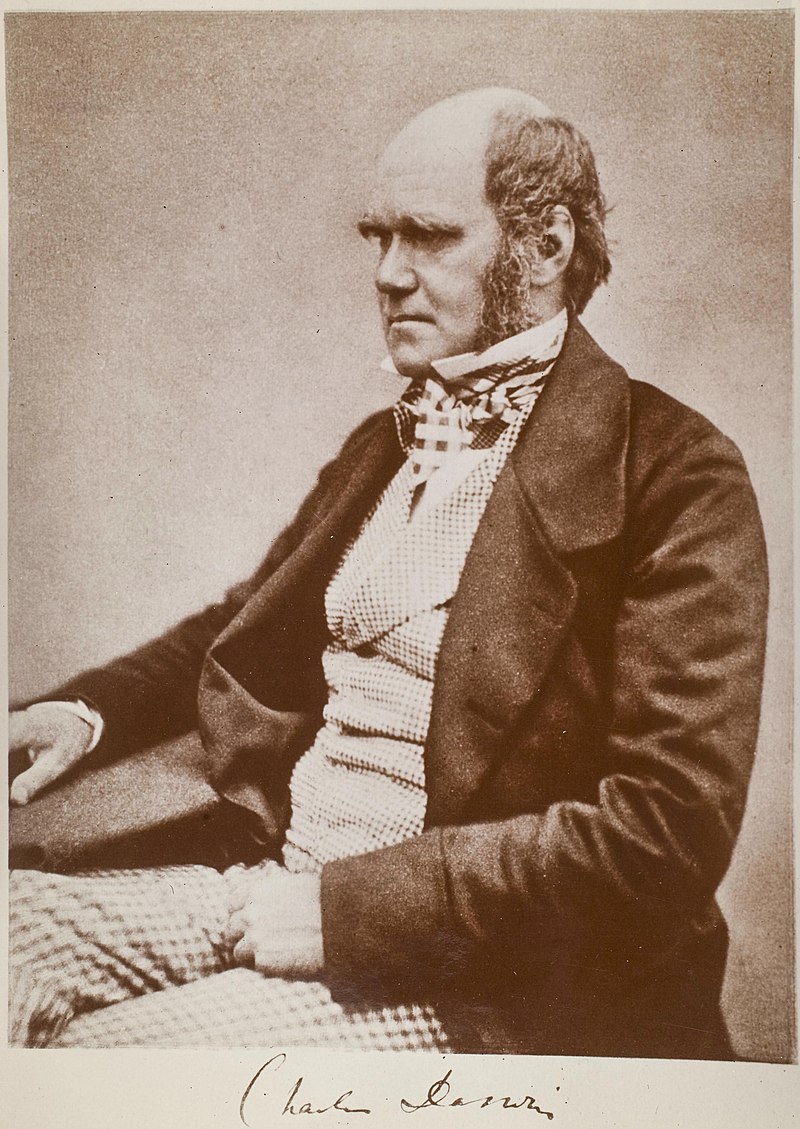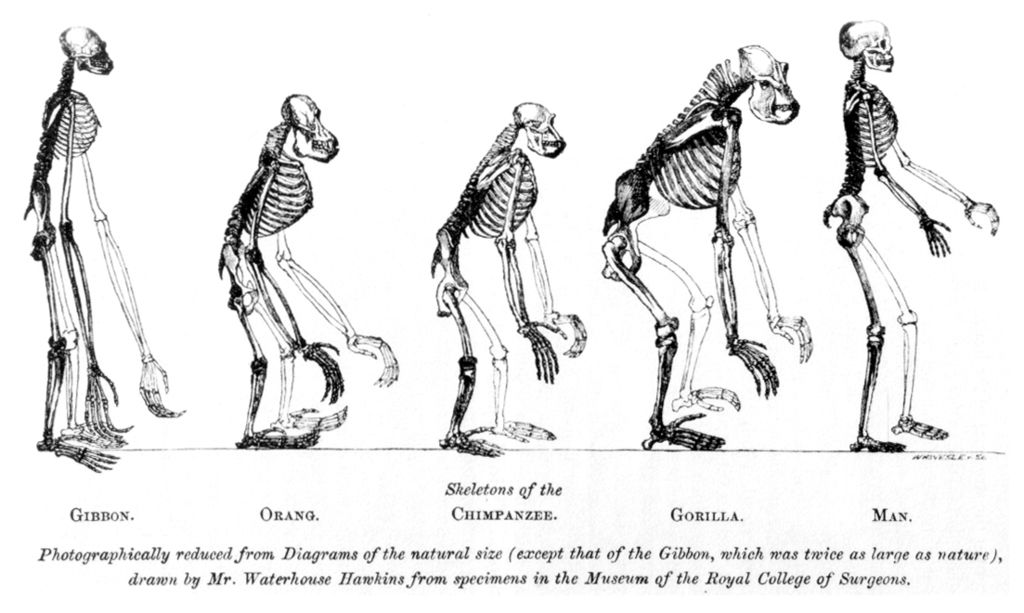On the Origin of Species




On the Origin of Species (or, more completely, On the Origin of Species by Means of Natural Selection, or the Preservation of Favoured Races in the Struggle for Life), published on 24 November 1859, is a work of scientific literature by Charles Darwin which is considered to be the foundation of evolutionary biology. Darwin's book introduced the scientific theory that populations evolve over the course of generations through a process of natural selection. The book presented a body of evidence that the diversity of life arose by common descent through a branching pattern of evolution. Darwin included evidence that he had collected on the Beagle expedition in the 1830s and his subsequent findings from research, correspondence, and experimentation.
Various evolutionary ideas had already been proposed to explain new findings in biology. There was growing support for such ideas among dissident anatomists and the general public, but during the first half of the 19th century the English scientific establishment was closely tied to the Church of England, while science was part of natural theology. Ideas about the transmutation of species were controversial as they conflicted with the beliefs that species were unchanging parts of a designed hierarchy and that humans were unique, unrelated to other animals. The political and theological implications were intensely debated, but transmutation was not accepted by the scientific mainstream.
The book was written for non-specialist readers and attracted widespread interest upon its publication. As Darwin was an eminent scientist, his findings were taken seriously and the evidence he presented generated scientific, philosophical, and religious discussion. The debate over the book contributed to the campaign by T. H. Huxley and his fellow members of the X Club to secularise science by promoting scientific naturalism. Within two decades there was widespread scientific agreement that evolution, with a branching pattern of common descent, had occurred, but scientists were slow to give natural selection the significance that Darwin thought appropriate. During "the eclipse of Darwinism" from the 1880s to the 1930s, various other mechanisms of evolution were given more credit. With the development of the modern evolutionary synthesis in the 1930s and 1940s, Darwin's concept of evolutionary adaptation through natural selection became central to modern evolutionary theory, and it has now become the unifying concept of the life sciences.

Summary of Darwin's theory
Darwin's theory of evolution is based on key facts and the inferences drawn from them, which biologist Ernst Mayr summarised as follows:
- Every species is fertile enough that if all offspring survived to reproduce, the population would grow (fact).
- Despite periodic fluctuations, populations remain roughly the same size (fact).
- Resources such as food are limited and are relatively stable over time (fact).
- A struggle for survival ensues (inference).
- Individuals in a population vary significantly from one another (fact).
- Much of this variation is heritable (fact).
- Individuals less suited to the environment are less likely to survive and less likely to reproduce; individuals more suited to the environment are more likely to survive and more likely to reproduce and leave their heritable traits to future generations, which produces the process of natural selection (fact).
- This slowly effected process results in populations changing to adapt to their environments, and ultimately, these variations accumulate over time to form new species (inference).
Reception
The book aroused international interest and a widespread debate, with no sharp line between scientific issues and ideological, social and religious implications. Much of the initial reaction was hostile, in a large part because very few reviewers actually understood his theory, but Darwin had to be taken seriously as a prominent and respected name in science. Samuel Wilberforce wrote a review in Quarterly Review in 1860 where he disagreed with Darwin's 'argument'. There was much less controversy than had greeted the 1844 publication Vestiges of Creation, which had been rejected by scientists, but had influenced a wide public readership into believing that nature and human society were governed by natural laws. The Origin of Species as a book of wide general interest became associated with ideas of social reform. Its proponents made full use of a surge in the publication of review journals, and it was given more popular attention than almost any other scientific work, though it failed to match the continuing sales of Vestiges. Darwin's book legitimised scientific discussion of evolutionary mechanisms, and the newly coined term Darwinism was used to cover the whole range of evolutionism, not just his own ideas. By the mid-1870s, evolutionism was triumphant.
While Darwin had been somewhat coy about human origins, not identifying any explicit conclusion on the matter in his book, he had dropped enough hints about human's animal ancestry for the inference to be made, and the first review claimed it made a creed of the "men from monkeys" idea from Vestiges. Human evolution became central to the debate and was strongly argued by Huxley who featured it in his popular "working-men's lectures". Darwin did not publish his own views on this until 1871.
The naturalism of natural selection conflicted with presumptions of purpose in nature and while this could be reconciled by theistic evolution, other mechanisms implying more progress or purpose were more acceptable. Herbert Spencer had already incorporated Lamarckism into his popular philosophy of progressive free market human society. He popularised the terms evolution and survival of the fittest, and many thought Spencer was central to evolutionary thinking.

Impact on the scientific community
Scientific readers were already aware of arguments that species changed through processes that were subject to laws of nature, but the transmutational ideas of Lamarck and the vague "law of development" of Vestiges had not found scientific favour. Darwin presented natural selection as a scientifically testable mechanism while accepting that other mechanisms such as inheritance of acquired characters were possible. His strategy established that evolution through natural laws was worthy of scientific study, and by 1875, most scientists accepted that evolution occurred but few thought natural selection was significant. Darwin's scientific method was also disputed, with his proponents favouring the empiricism of John Stuart Mill's A System of Logic, while opponents held to the idealist school of William Whewell's Philosophy of the Inductive Sciences, in which investigation could begin with the intuitive idea that species were fixed objects created by design. Early support for Darwin's ideas came from the findings of field naturalists studying biogeography and ecology, including Joseph Dalton Hooker in 1860, and Asa Gray in 1862. Henry Walter Bates presented research in 1861 that explained insect mimicry using natural selection. Alfred Russel Wallace discussed evidence from his Malay archipelago research, including an 1864 paper with an evolutionary explanation for the Wallace line.
Evolution had less obvious applications to anatomy and morphology, and at first had little impact on the research of the anatomist Thomas Henry Huxley. Despite this, Huxley strongly supported Darwin on evolution; though he called for experiments to show whether natural selection could form new species, and questioned if Darwin's gradualism was sufficient without sudden leaps to cause speciation. Huxley wanted science to be secular, without religious interference, and his article in the April 1860 Westminster Review promoted scientific naturalism over natural theology, praising Darwin for "extending the domination of Science over regions of thought into which she has, as yet, hardly penetrated" and coining the term "Darwinism" as part of his efforts to secularise and professionalise science. Huxley gained influence, and initiated the X Club, which used the journal Nature to promote evolution and naturalism, shaping much of late-Victorian science. Later, the German morphologist Ernst Haeckel would convince Huxley that comparative anatomy and palaeontology could be used to reconstruct evolutionary genealogies.
The leading naturalist in Britain was the anatomist Richard Owen, an idealist who had shifted to the view in the 1850s that the history of life was the gradual unfolding of a divine plan. Owen's review of the Origin in the April 1860 Edinburgh Review bitterly attacked Huxley, Hooker and Darwin, but also signalled acceptance of a kind of evolution as a teleological plan in a continuous "ordained becoming", with new species appearing by natural birth. Others that rejected natural selection, but supported "creation by birth", included the Duke of Argyll who explained beauty in plumage by design. Since 1858, Huxley had emphasised anatomical similarities between apes and humans, contesting Owen's view that humans were a separate sub-class. Their disagreement over human origins came to the fore at the British Association for the Advancement of Science meeting featuring the legendary 1860 Oxford evolution debate. In two years of acrimonious public dispute that Charles Kingsley satirised as the "Great Hippocampus Question" and parodied in The Water-Babies as the "great hippopotamus test", Huxley showed that Owen was incorrect in asserting that ape brains lacked a structure present in human brains. Others, including Charles Lyell and Alfred Russel Wallace, thought that humans shared a common ancestor with apes, but higher mental faculties could not have evolved through a purely material process. Darwin published his own explanation in the Descent of Man (1871).













0 comments
Sign in or create a free account